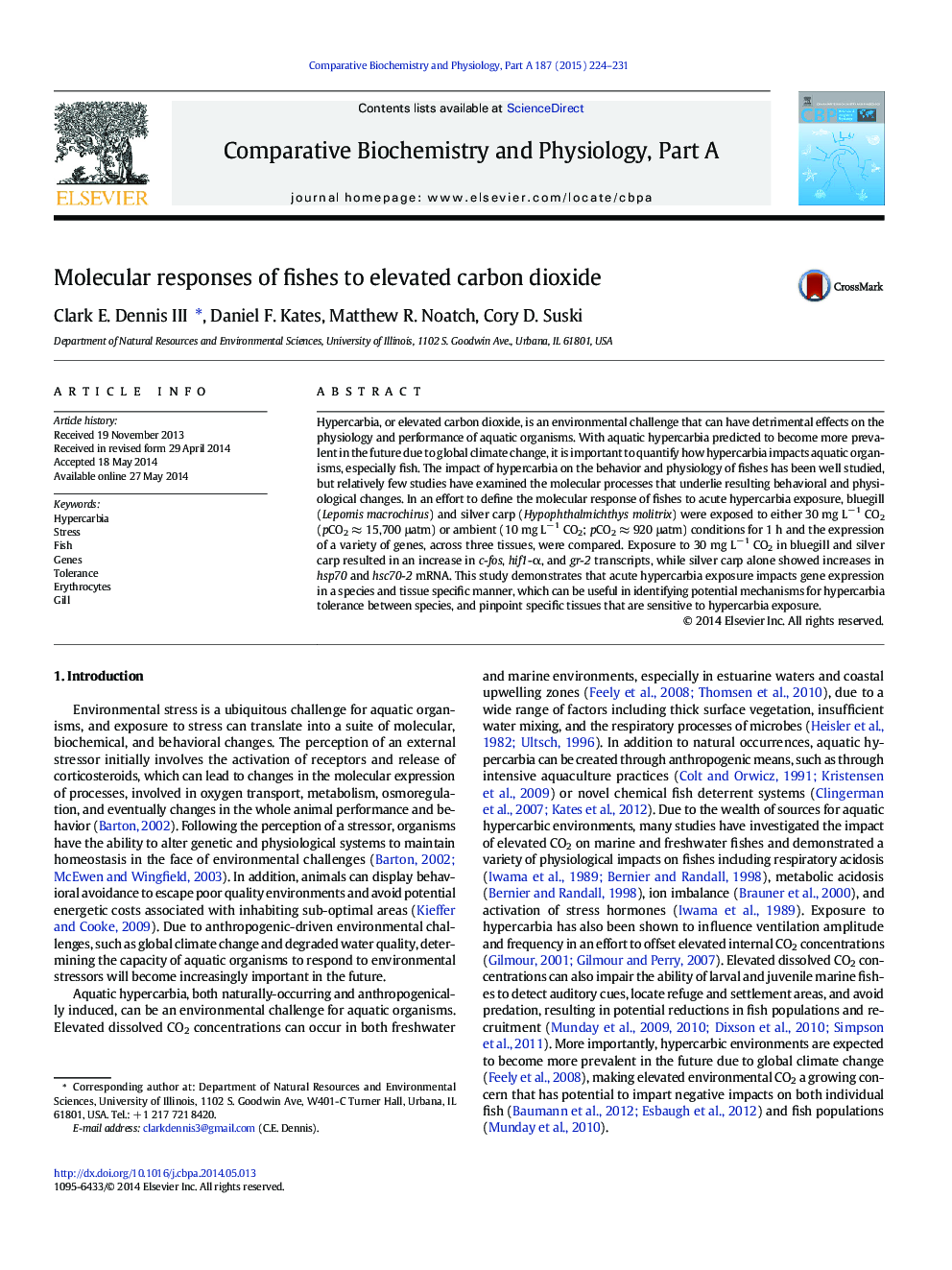| کد مقاله | کد نشریه | سال انتشار | مقاله انگلیسی | نسخه تمام متن |
|---|---|---|---|---|
| 1972037 | 1539000 | 2015 | 8 صفحه PDF | دانلود رایگان |
Hypercarbia, or elevated carbon dioxide, is an environmental challenge that can have detrimental effects on the physiology and performance of aquatic organisms. With aquatic hypercarbia predicted to become more prevalent in the future due to global climate change, it is important to quantify how hypercarbia impacts aquatic organisms, especially fish. The impact of hypercarbia on the behavior and physiology of fishes has been well studied, but relatively few studies have examined the molecular processes that underlie resulting behavioral and physiological changes. In an effort to define the molecular response of fishes to acute hypercarbia exposure, bluegill (Lepomis macrochirus) and silver carp (Hypophthalmichthys molitrix) were exposed to either 30 mg L− 1 CO2 (pCO2 ≈ 15,700 μatm) or ambient (10 mg L− 1 CO2; pCO2 ≈ 920 μatm) conditions for 1 h and the expression of a variety of genes, across three tissues, were compared. Exposure to 30 mg L− 1 CO2 in bluegill and silver carp resulted in an increase in c-fos, hif1-α, and gr-2 transcripts, while silver carp alone showed increases in hsp70 and hsc70-2 mRNA. This study demonstrates that acute hypercarbia exposure impacts gene expression in a species and tissue specific manner, which can be useful in identifying potential mechanisms for hypercarbia tolerance between species, and pinpoint specific tissues that are sensitive to hypercarbia exposure.
Journal: Comparative Biochemistry and Physiology Part A: Molecular & Integrative Physiology - Volume 187, September 2015, Pages 224–231
